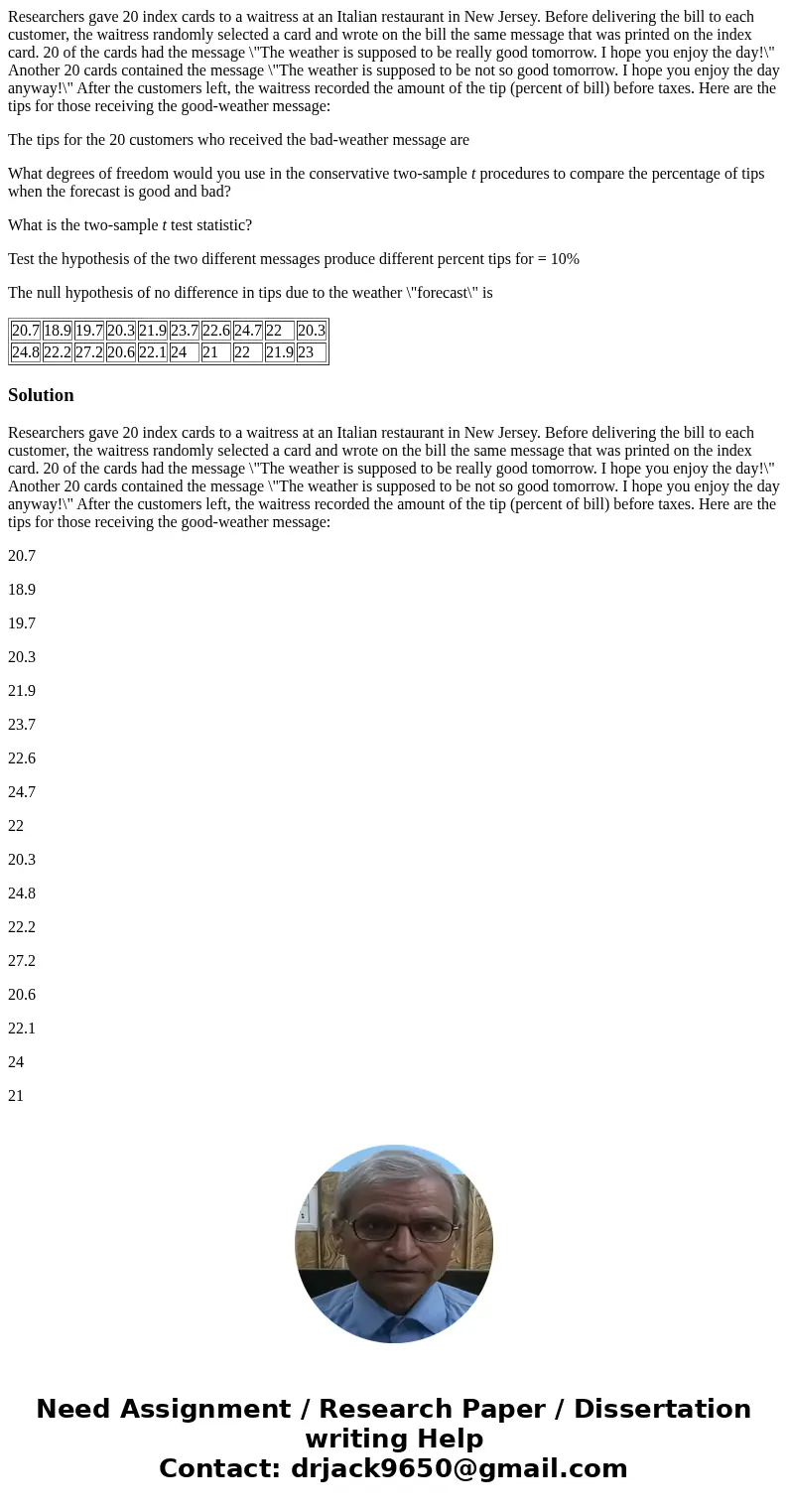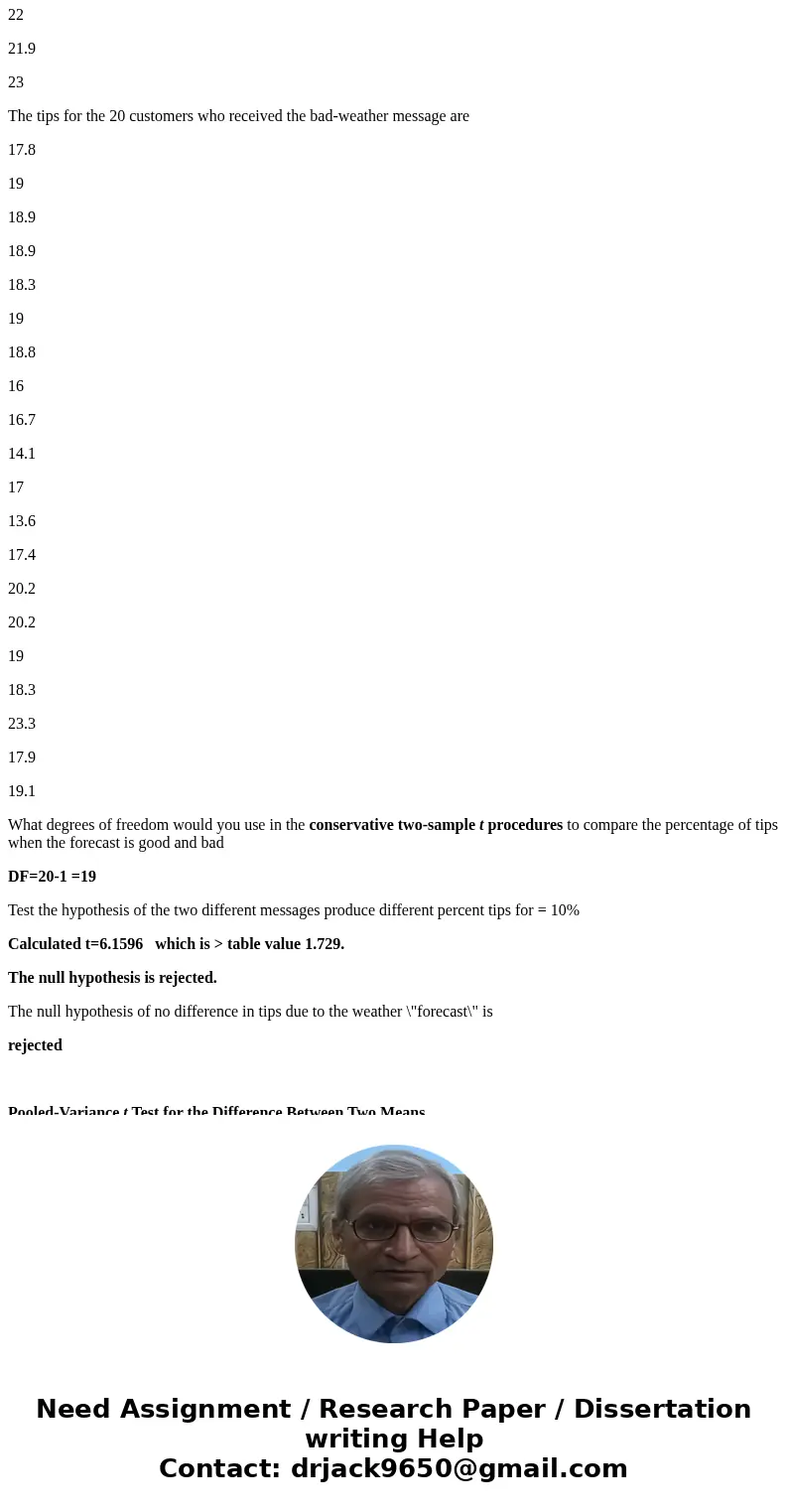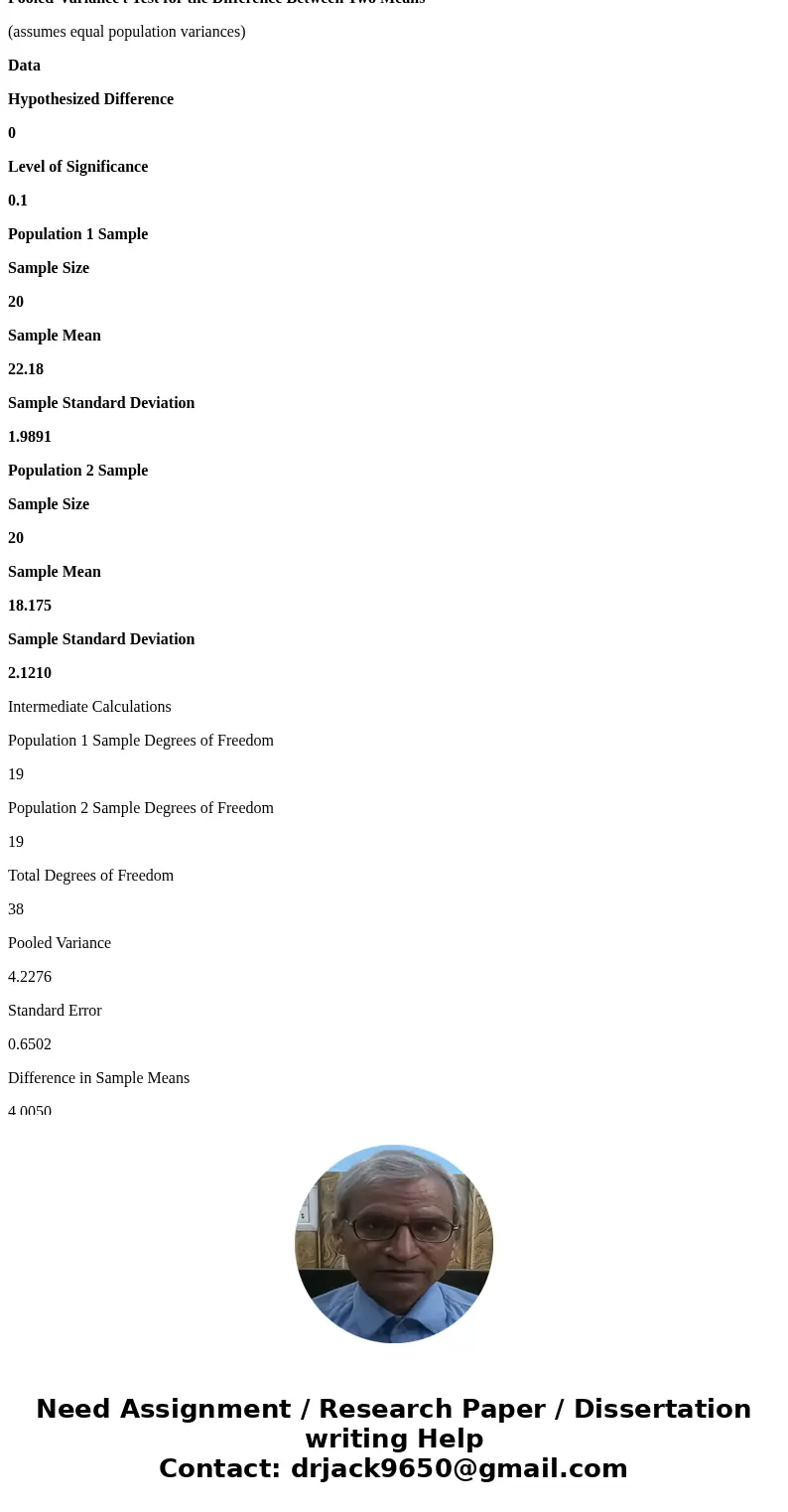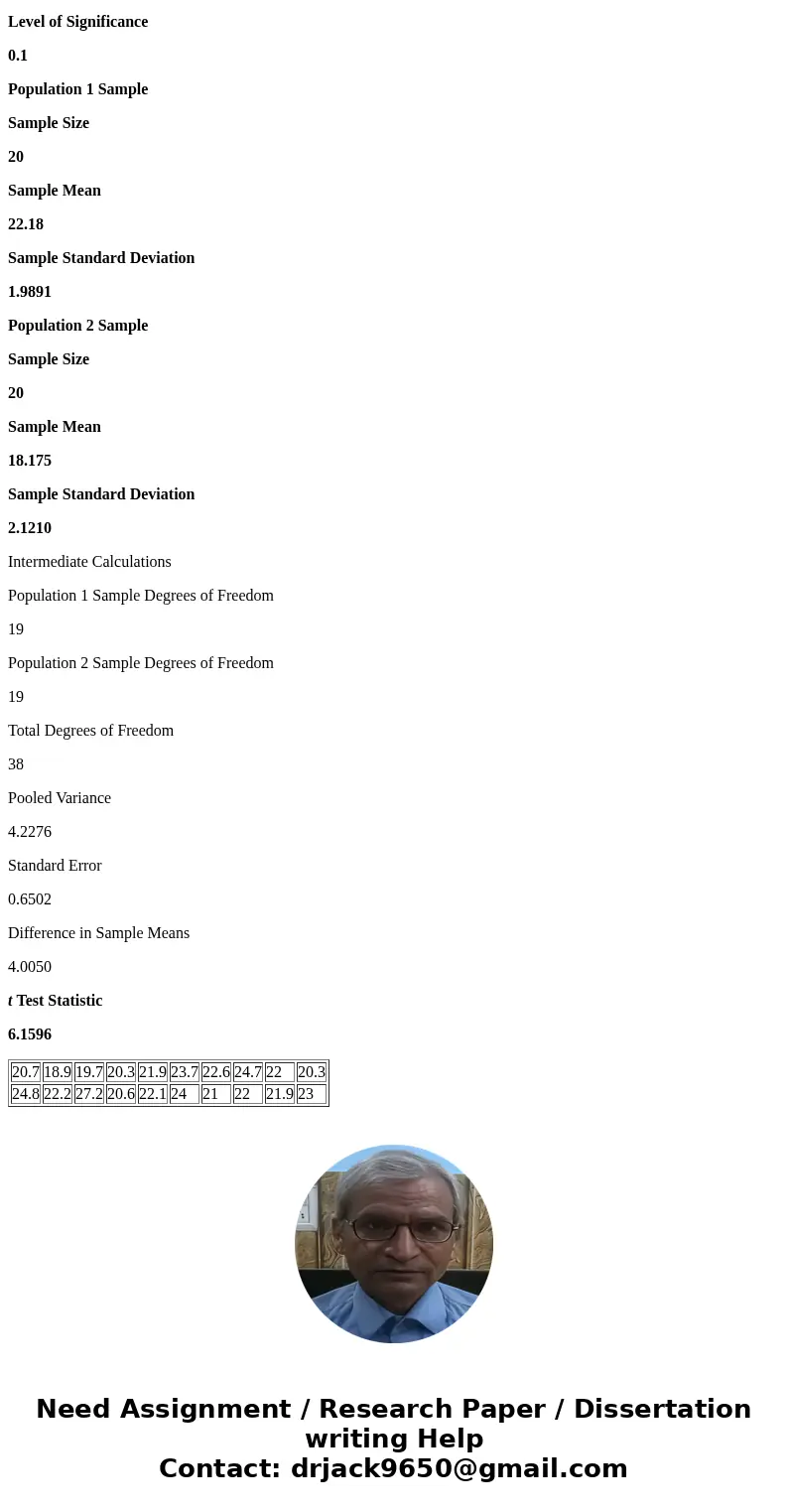Researchers gave 20 index cards to a waitress at an Italian
Researchers gave 20 index cards to a waitress at an Italian restaurant in New Jersey. Before delivering the bill to each customer, the waitress randomly selected a card and wrote on the bill the same message that was printed on the index card. 20 of the cards had the message \"The weather is supposed to be really good tomorrow. I hope you enjoy the day!\" Another 20 cards contained the message \"The weather is supposed to be not so good tomorrow. I hope you enjoy the day anyway!\" After the customers left, the waitress recorded the amount of the tip (percent of bill) before taxes. Here are the tips for those receiving the good-weather message:
The tips for the 20 customers who received the bad-weather message are
What degrees of freedom would you use in the conservative two-sample t procedures to compare the percentage of tips when the forecast is good and bad?
What is the two-sample t test statistic?
Test the hypothesis of the two different messages produce different percent tips for = 10%
The null hypothesis of no difference in tips due to the weather \"forecast\" is
| 20.7 | 18.9 | 19.7 | 20.3 | 21.9 | 23.7 | 22.6 | 24.7 | 22 | 20.3 |
| 24.8 | 22.2 | 27.2 | 20.6 | 22.1 | 24 | 21 | 22 | 21.9 | 23 |
Solution
Researchers gave 20 index cards to a waitress at an Italian restaurant in New Jersey. Before delivering the bill to each customer, the waitress randomly selected a card and wrote on the bill the same message that was printed on the index card. 20 of the cards had the message \"The weather is supposed to be really good tomorrow. I hope you enjoy the day!\" Another 20 cards contained the message \"The weather is supposed to be not so good tomorrow. I hope you enjoy the day anyway!\" After the customers left, the waitress recorded the amount of the tip (percent of bill) before taxes. Here are the tips for those receiving the good-weather message:
20.7
18.9
19.7
20.3
21.9
23.7
22.6
24.7
22
20.3
24.8
22.2
27.2
20.6
22.1
24
21
22
21.9
23
The tips for the 20 customers who received the bad-weather message are
17.8
19
18.9
18.9
18.3
19
18.8
16
16.7
14.1
17
13.6
17.4
20.2
20.2
19
18.3
23.3
17.9
19.1
What degrees of freedom would you use in the conservative two-sample t procedures to compare the percentage of tips when the forecast is good and bad
DF=20-1 =19
Test the hypothesis of the two different messages produce different percent tips for = 10%
Calculated t=6.1596 which is > table value 1.729.
The null hypothesis is rejected.
The null hypothesis of no difference in tips due to the weather \"forecast\" is
rejected
Pooled-Variance t Test for the Difference Between Two Means
(assumes equal population variances)
Data
Hypothesized Difference
0
Level of Significance
0.1
Population 1 Sample
Sample Size
20
Sample Mean
22.18
Sample Standard Deviation
1.9891
Population 2 Sample
Sample Size
20
Sample Mean
18.175
Sample Standard Deviation
2.1210
Intermediate Calculations
Population 1 Sample Degrees of Freedom
19
Population 2 Sample Degrees of Freedom
19
Total Degrees of Freedom
38
Pooled Variance
4.2276
Standard Error
0.6502
Difference in Sample Means
4.0050
t Test Statistic
6.1596
| 20.7 | 18.9 | 19.7 | 20.3 | 21.9 | 23.7 | 22.6 | 24.7 | 22 | 20.3 |
| 24.8 | 22.2 | 27.2 | 20.6 | 22.1 | 24 | 21 | 22 | 21.9 | 23 |




 Homework Sourse
Homework Sourse